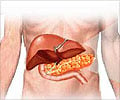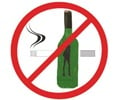An online version of the journal, Health Services Research suggests a way to control huge financial and societal burden of alcohol abuse.The solution lies in states changing their Medicaid drug policies.This could in turn, pave the way for easy access to an inexpensive prescription drug that reduces problem drinking.
The study by researchers at the University of Wisconsin and Georgetown University examined how state efforts to control spending on Medicaid, the program that provides health care for low-income individuals and families, may be limiting the ability of physicians to treat alcohol addiction with a widely studied generic drug called naltrexone. The research was funded by the Robert Wood Johnson Foundation’s Substance Abuse Policy Research Program (SAPRP).“States should be keen to quickly deal with this problem because today they are spending on average about $1 of every $7 of their revenues dealing with alcohol-related problems like child neglect and violent crime,” said Carolyn Heinrich, a professor of Public Affairs at the University of Wisconsin-Madison and the study’s lead author. “Naltrexone is certainly not a cure-all, but it can be a powerful therapy, it’s relatively inexpensive and states have the policy levers at hand to increase its availability to alcohol addicts.”
Evidence from clinical trials shows that naltrexone, which blocks a brain receptor associated with a craving for alcohol, makes it easier for alcoholics to stop drinking and stay sober even when the drug is used alone; that is, unaccompanied by counseling or other interventions.
“We know from extensive research that only about 6 percent of people diagnosed as alcohol dependent are getting medication during their treatment and about a third of those who do not get medication cite cost or insurance as the key barrier,” Heinrich said. “Revising certain state policies on prescription drugs is one way to address what is clearly a need for greater access to a clinically-proven and cost-effective treatment.”
Heinrich and her colleague Carolyn Hill, an assistant professor at Georgetown Public Policy Institute, found that treatment providers are more likely to prescribe naltrexone when states institute policies that encourage the use of generic drugs, include generics on their preferred drug lists and reduce drug costs for Medicaid beneficiaries. Conversely, they found naltrexone is less likely to be adopted in states whose policies allow managed care organizations to restrict access to pharmacy networks or limit prescriptions. Other policies that impede naltrexone’s use include restricting the use of Medicaid funds for substance abuse treatment and establishing restrictive Medicaid preferred drug lists.
State policies related to Medicaid prescription drug benefits are seen as critical to determining naltrexone’s availability because Medicaid funds and related block grants constitute the majority of spending, public or private, on substance abuse treatment. One reason for this dominant role is that most alcoholics tend to be poor and lacking in health insurance and thus are dependent on Medicaid for care.
Advertisement
But there are limits to the information available for many states. For example, Maine, while encouraging naltrexone adoption for Medicaid enrollees, allows it to be prescribed only in the context of “a formal, structured outpatient detoxification program” even though research shows it can be effective as a stand-alone therapy. Also, not every state has a Medicaid preferred drug list and some lists may not be publicly available while undergoing revision. Other states might be implicitly encouraging naltrexone use through general policies that promote the adoption of generic drugs, but such policy-specific information is not always readily available on a state-by-state basis.
Advertisement
Source-Eurekalert
KAR/P











